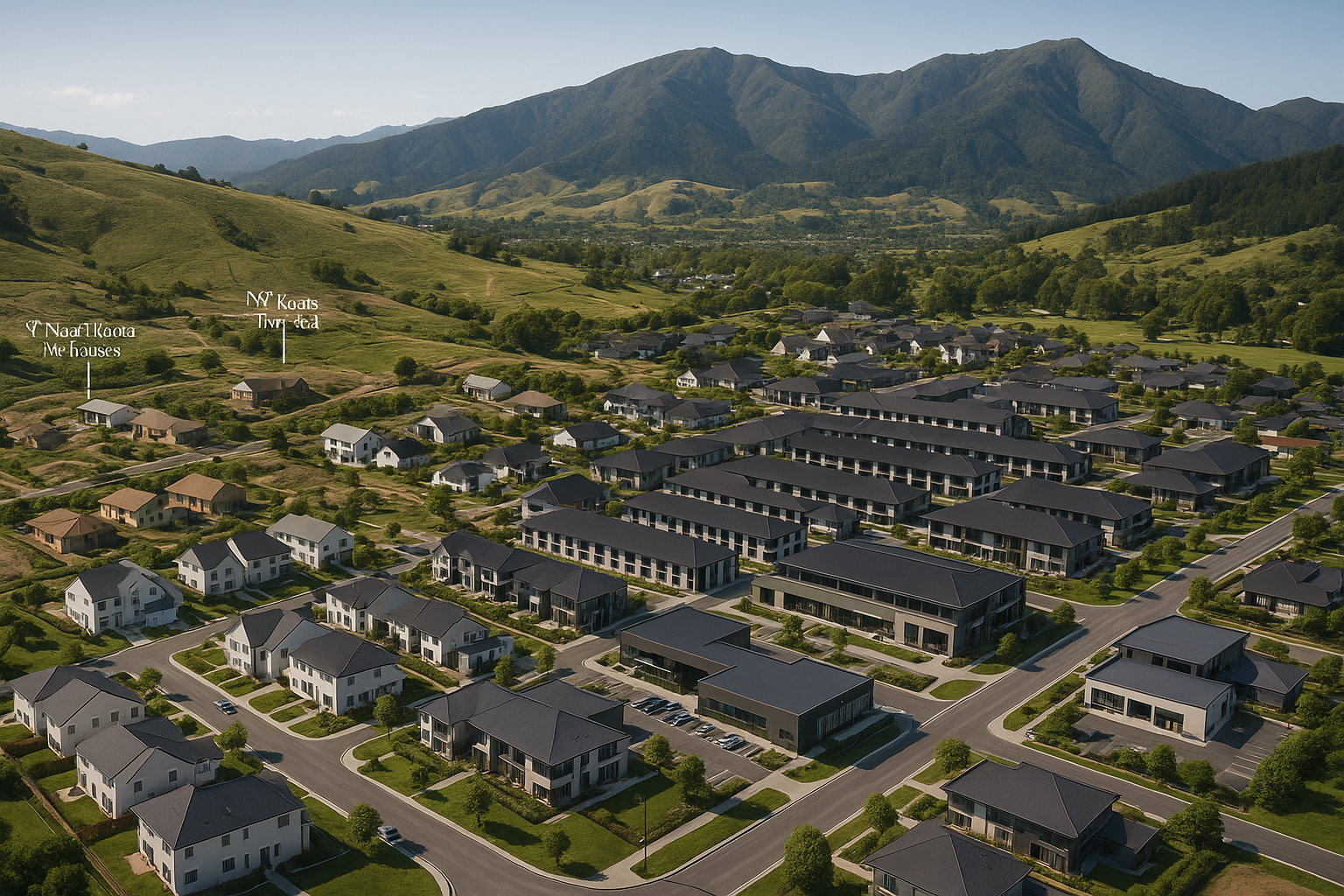Govt Confirms Streamlined Planning Process for Auckland’s New Housing Plan
The confirmation follows the Council’s decision to withdraw its previous housing plan, Plan Change 78 (PC78) — a move made possible after Parliament passed new legislation in August 2025, at Auckland Council’s request.

- Country:
- New Zealand
The Government has confirmed the Streamlined Planning Process (SPP) that will guide Auckland Council's new housing plan — Plan Change 120 (PC120) — marking a significant step toward reshaping how New Zealand's largest city plans for future housing and urban growth. The process, formally approved by RMA Reform Minister Chris Bishop, is designed to balance housing capacity, local decision-making, and resilience to natural hazards, while unlocking the potential of new infrastructure such as the City Rail Link (CRL).
Transition from PC78 to PC120: A Reset for Auckland's Growth Strategy
The confirmation follows the Council's decision to withdraw its previous housing plan, Plan Change 78 (PC78) — a move made possible after Parliament passed new legislation in August 2025, at Auckland Council's request.
PC78, introduced under the previous Government, had sought to implement Medium Density Residential Standards (MDRS) across much of the city, allowing for up to three dwellings of three storeys on most residential sites. However, the plan faced strong criticism from residents and local leaders who argued it did not adequately account for flood-prone and hazard-vulnerable areas.
Under the new legislation, Auckland Council was granted the ability to "downzone" such areas and craft a replacement housing plan — PC120 — that better reflects local needs and conditions.
"The Government agreed to Auckland Council's request and required that the new plan must deliver at least the same overall housing capacity as PC78, while enabling greater building heights and density around key City Rail Link stations," said Minister Bishop. "This approach ensures we meet housing demand while putting decision-making back in local hands."
Streamlined Planning Process: What It Means
At the Council's request, PC120 will now progress through the Streamlined Planning Process, a legislated pathway under the Resource Management Act (RMA) designed to deliver plan changes efficiently while maintaining robust public input.
Under the SPP:
-
The process will run for 20 months (extended from the initially proposed 18 months).
-
Public submissions will open from 3 November to 19 December 2025.
-
Hearings will take place in 2026, overseen by an independent hearings panel of eight to nine members.
-
Four members will be appointed by the Government.
-
The remaining members will be appointed by Auckland Council.
-
The Council and Ministers are collaborating on selecting the panel chair.
-
Minister Bishop emphasised that transparency and public participation remain central to the process. "It's important that Aucklanders have robust opportunities to participate. The Council asked for a transparent process, and that's exactly what we're committed to delivering," he said.
To support engagement, the Government will fund a 'Friend of Submitter' service, which will help Auckland residents understand and participate in the submission process — particularly those unfamiliar with planning procedures.
Expectations for PC120: Balancing Growth and Local Control
Alongside the direction for the SPP, the Government has also issued a formal statement of expectations for PC120. The statement outlines key priorities for both Auckland Council and the hearings panel, including:
-
Avoiding unnecessary restrictions that could frustrate housing development.
-
Testing the distribution of housing capacity, including in greenfield areas on Auckland's fringes.
-
Ensuring all rapid transit stops are properly identified and integrated into future housing growth — particularly those linked to the City Rail Link and Northwest Busway.
While the Council had requested that the reference to greenfield development be removed, the Government declined, insisting it was vital to maintain flexibility for both urban intensification and new development areas.
"The purpose of these expectations is to make sure Auckland's housing plan is balanced — enabling intensification where it makes sense, but also keeping options open for new communities where infrastructure allows," said Bishop.
City Rail Link and Urban Transformation
A cornerstone of PC120 will be aligning housing growth with major transport investments, particularly the City Rail Link, set to open next year. The CRL — New Zealand's largest-ever transport infrastructure project — is expected to reshape commuting patterns, reduce congestion, and make central Auckland more accessible.
The Government's planning direction requires the Council to prioritise greater building heights and higher residential density near key CRL stations, reflecting global best practice for transit-oriented development.
"This is about building more homes close to jobs, public transport, and amenities," Bishop said. "It's about creating a city that's liveable, sustainable, and ready for the next generation."
Local Voices at the Heart of Decision-Making
The shift from PC78 to PC120 marks a broader philosophical change in how urban planning decisions are made — one that re-centres local input and community priorities.
"By giving Auckland Council the option to withdraw PC78, we've returned decision-making to locals," Bishop said. "Aucklanders will once again decide how and where housing growth happens in this important city for New Zealand's future."
The direction for the Streamlined Planning Process takes effect immediately upon its publication in the New Zealand Gazette.
With a transparent process, public engagement tools, and a clear timeline in place, PC120 is expected to define how Auckland accommodates growth while balancing infrastructure capacity, environmental safety, and community values — setting the tone for urban development across the country.
Tags:









